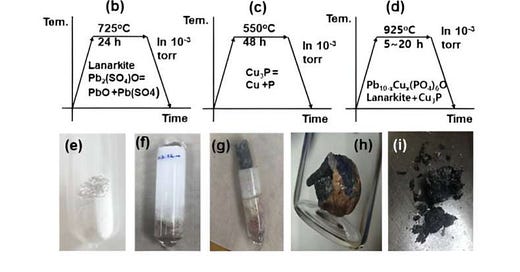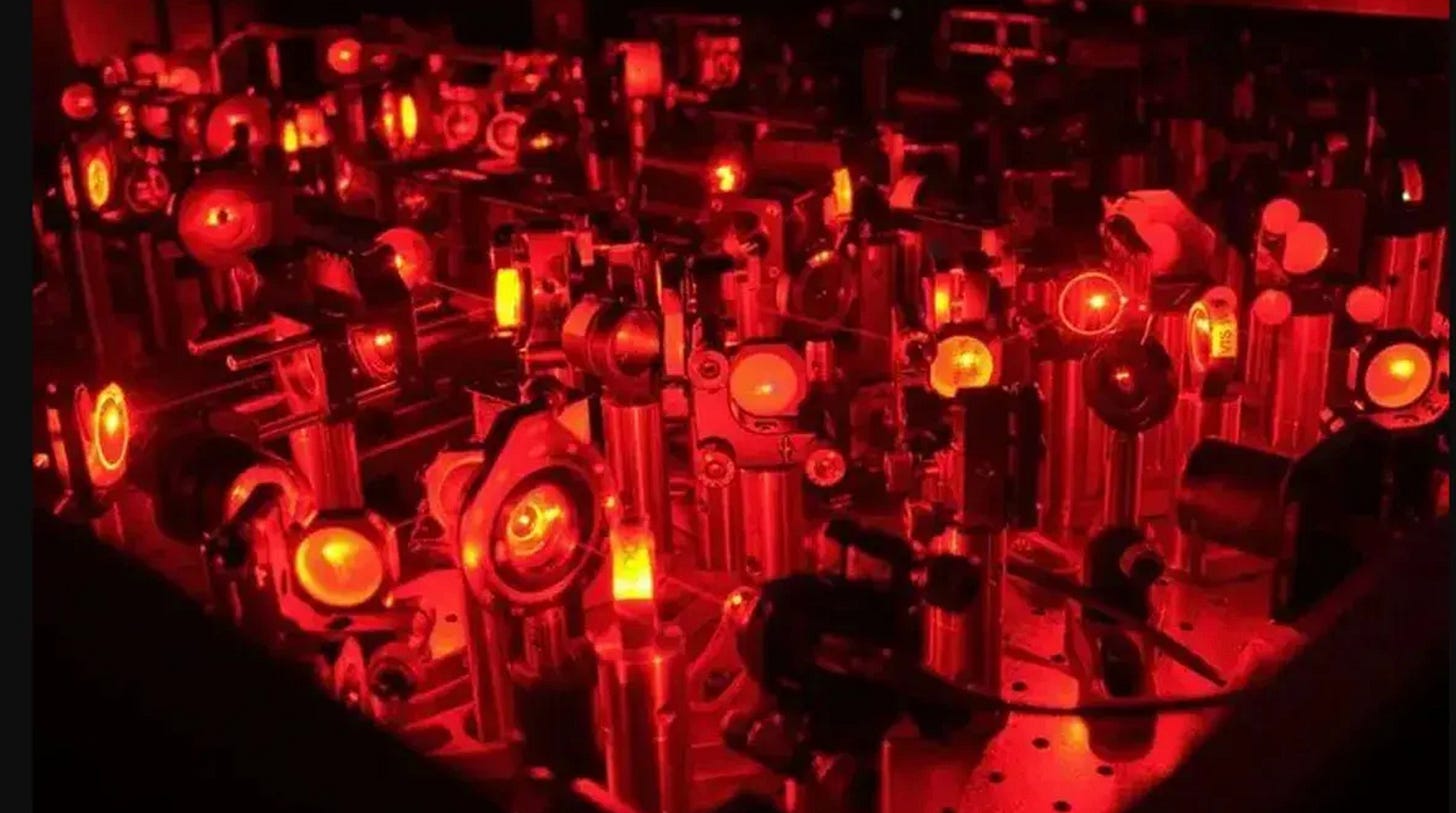This week we have a look at another claim surrounding the development of a room temperature superconductor. Maybe this one will work? We should know in the next few weeks. We examine an autonomous method of deep sea mining that is not as disruptive to the sea floor and we investigate a new Proton Battery that does not rely on rare earth materials. Finally we discover a new way of navigating without the use of GPS.
Room Temperature SuperConductor
In March we spoke about a claim that a room temperature superconductor had been invented. The claim at the time was viewed with skepticism. There has been no further progress there that I am aware of. These claims happen quite often and mostly go nowhere.
This week there has been another claim of the development of a room temperature superconductor however this claim might be a bit different. Despite being met with the usual skepticism there are teams around the world trying to replicate the experiment and produce the superconductor.
Firstly let’s start with what the team in South Korea claim they developed. A team of physicists at a range of institutions in South Korea have claimed they developed a room temperature, ambient pressure superconducting material. A superconductor is a material that conducts electricity without resistance. Such a material would revolutionize electronics and most other electricity based applications. Previous superconductors only operated at almost absolute zero temperatures or under extreme pressure. These two latter conditions made them extremely expensive and impractical.
The team described a new material that they call LK-99. The new material was created in a solid state reaction between lanarkite (Pb2SO5) and copper phosphide (Cu3P). The team measured samples of the material with electricity applied and the sensitivity fell to near zero. In testing the material’s magnetism it also exhibited the Meissner effect. This is where a sample of the material levitates when place upon a magnet. This levitation is another test of superconductivity. The video they provided showed partial levitation (they claim this was due to impurities in the material).
It did not take long after publication for the critics to weigh in. The material used is diamagnetic in its’ normal state and therefor is likely to be levitating due to the diamagnetic state rather than superconductivity. The initial material used was a lead compound that is a non conducting mineral rather than a metal. The key ingredients (lead and copper atoms) have a similar structure so substituting one for another shouldn’t have much of an affect. Others pointed out data discrepancies in the two papers presented by the team. It was also reported that three of the original team of six split from the others and published the paper early without peer review or verification (the speculation being that because only 3 people can be awarded a Nobel Prize, a team of 6 would have to determine the 3 leading members, better to publish early and have others hate you than to miss out on a once in a lifetime Nobel Prize, who said there was no loyalty in science).
The initial skepticism was massive however a team from Huazhong University of Science and Technology in China have demonstrated a sample of the material levitating in different orientations to the magnet. Superconductors will levitate at all angles to the magnet where as diamagnetic material will reorient like a compass needle when placed above the magnet. Teams from Berkeley and Shenyang National Laboratory have examined the x-ray structural data and its’ predicted behavior via density functional theory calculations and both came to a similar conclusion, “it could work”. This is not yet proof but other teams from around the world are racing to replicate the material and the results.
If this is a room temperature superconductor and if it can be produced in commercial quantities at a cheap enough price (a series of very big ifs) then it will probably be one of the biggest advances of the last 100 years. The cost of electricity lost in transmission in the US per year alone is approximately $US20,000,000,000. That doesn’t count the unnecessary heat generated in every electrical device and on and on.
It was in 1911 that Heike Onnes discovered and named superconductivity (he won the 1913 Nobel Prize for the discovery). We should know in the next few weeks if the first of those ifs above is true.
Deep Sea Mining
Electric Vehicles require huge amounts of battery metals such as copper, manganese, cobalt and nickel. Currently these are mined on land however the impact on the environment is significant, particularly for cobalt mining.
We have known for decades that these metals are sitting on the sea floor in giant fields of polymetallic nodules. They look like rocks but are about the size of a potato. It takes millions of years to form these nodules through a range of ultra slow geological processes. These include the precipitation of metals from seawater in the presence of high oxygen levels. It is estimated that the nodules only grow a centimeter every few million years
Mining the sea floor is technically difficult and very controversial. It is one of the few places on the planet that remains untouched by humankind. In 1989 a test of deep sea mining raked clear an 8 meter wide channel in the middle of an 11 square kilometer patch of the Pacific Ocean. Life in the seabed has never recovered. Most early proposals for deep sea mining involved sucking up everything on the sea floor and tossing back anything that was not a mineral.
Impossible Metals based in Canada and California have developed an autonomous underwater vehicle that will drop to the ocean floor and pick out the nodules whilst leaving everything else in tact. The vehicle is designed to operate to a depth of 5 kilometers. Once it has picked up its’ fill of nodules it brings itself to the surface and drops the harvest back to the mother ship.
It is expected that the process will still disturb some marine life however that is kept to a minimum. The robots will be ready to be deployed at scale in 2026.
Proton Battery
There are tons and tons of claims about battery breakthroughs. Most are incremental improvements however a new type of battery, developed by RMIT in Melbourne, may be a game changer.
The battery uses a carbon electrode to store hydrogen proton that has been split from water. A fuel cell is then used to generate electricity with the hydrogen. At the moment the battery is small and has a hydrogen storage capacity of 2.2 weight % of hydrogen. This is three times in capacity of the 2018 prototype and is comparable energy per unit mass capacity for commercial lithium ion batteries.
During charging the proton battery splits water molecules to generate protons which bond to a carbon electrode. Hydrogen only has a proton and an electron. This process means that there is no need to store hydrogen gas at high pressure. When discharging, the protons are released from the carbon electrode and pass through a membrane to combine with oxygen from the air to form water. This reaction generates power.
The main advantages of the battery are the abundance and lower cost of carbon v lithium and the lack of any end of life problems with disposal. The battery also uses no cobalt (which ironically might just ruin the deep sea mining value proposition above).
The team is working on scaling up the system from watts to kilowatts and ultimately to megawatts. The RMIT team have commended a two year research collaboration with Italian International Automotive component supplier, Eldor Corporation to further develop the prototype.
GPS Free Navigation
Sydney based quantum computing developer, Q-CTRL has announced a partnership with AUKUS members to develop a quantum based GPS free navigation system. Q-CRTL’s technology uses the quantum physics of atoms to detect motion and small changes in the Earth’s gravitational field to enable navigation over long periods. Quantum sensors provide very reliable outputs as their signals do not degrade over time unlike mechanical or electrical systems.
This system can provide an alternative to GPS when it is unavailable or untrustworthy. The system is not able to be spoofed or jammed by adversaries and can be used in air, space, underground and underwater. As we have mentioned previously the GPS system is owned and controlled by the US Military. Whilst there are alternative systems they are not as developed. An onboard alternative will allow the US Military to turn off the GPS system in need without disabling their and their allies craft.
Paying it Forward
If you have a start-up or know of a start-up that has a product ready for market please let me know. I would be happy to have a look and feature the startup in this newsletter. Also if any startups need introductions please get in touch and I will help where I can.
If you have any questions or comments please comment below.
I would also appreciate it if you could forward this newsletter to anyone that you think might be interested.
Till next week.







